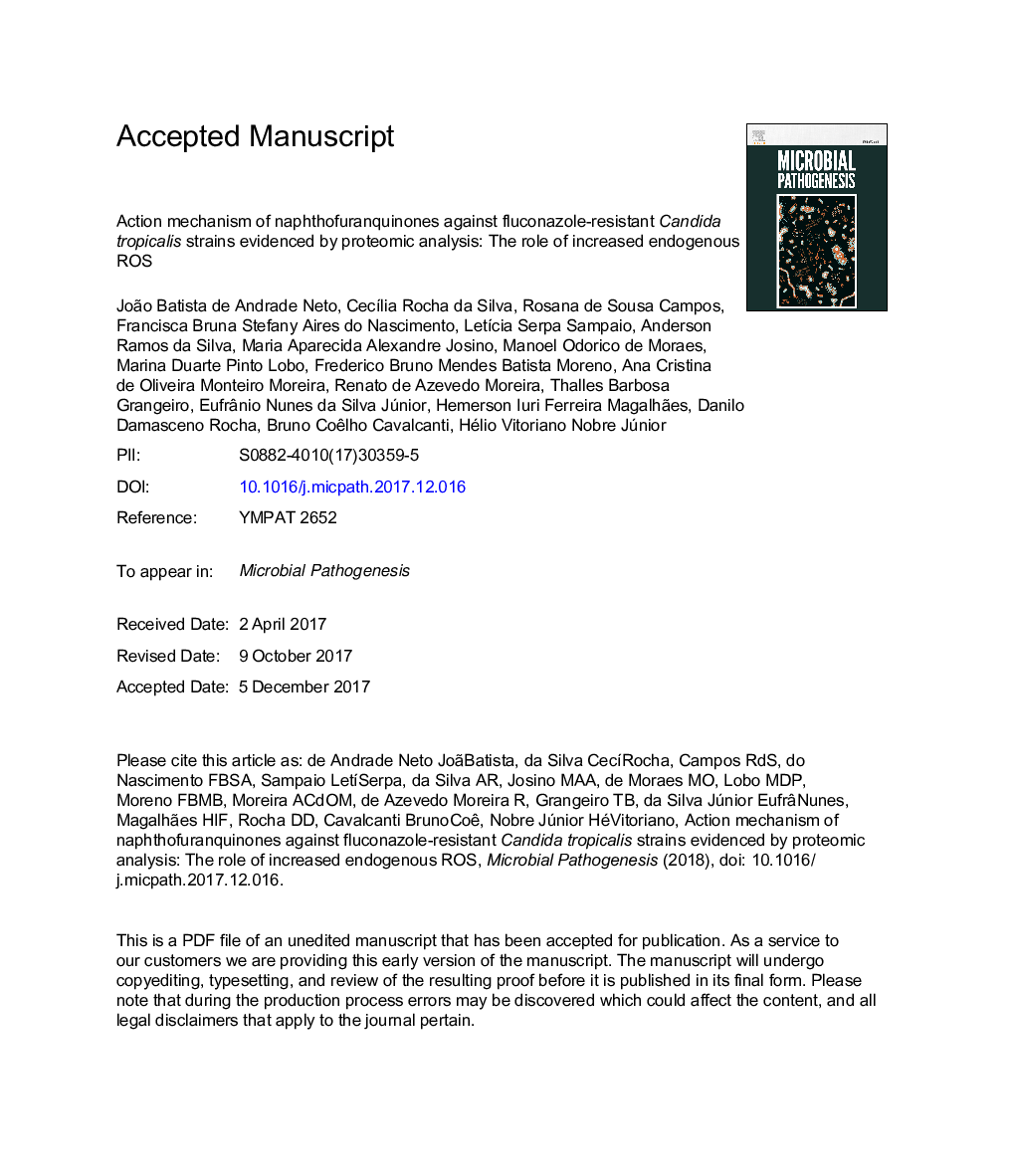| Article ID | Journal | Published Year | Pages | File Type |
|---|---|---|---|---|
| 8749613 | Microbial Pathogenesis | 2018 | 41 Pages |
Abstract
The increased incidence of candidemia in terciary hospitals worldwide and the cross-resistance frequency require the new therapeutic strategies development. Recently, our research group demonstrated three semi-synthetic naphthofuranquinones (NFQs) with a significant antifungal activity in a fluconazole-resistant (FLC) C. tropicalis strain. The current study aimed to investigate the action's preliminary mechanisms of NFQs by several standardized methods such as proteomic and flow cytometry analyzes, comet assay, immunohistochemistry and confocal microscopy evaluation. Our data showed C. tropicalis 24 h treated with all NFQs induced an expression's increase of proteins involved in the metabolic response to stress, energy metabolism, glycolysis, nucleosome assembly and translation process. Some aspects of proteomic analysis are in consonance with our flow cytometry analysis which indicated an augmentation of intracellular ROS, mitochondrial dysfunction and DNA strand breaks (neutral comet assay and γ-H2AX detection). In conclusion, our data highlights the great contribution of ROS as a key event, probably not the one, associated to anti-candida properties of studied NFQs.
Related Topics
Life Sciences
Immunology and Microbiology
Microbiology
Authors
João Batista de Andrade Neto, CecÃlia Rocha da Silva, Rosana de Sousa Campos, Francisca Bruna Stefany Aires do Nascimento, LetÃcia Serpa Sampaio, Anderson Ramos da Silva, Maria Aparecida Alexandre Josino, Manoel Odorico de Moraes,
